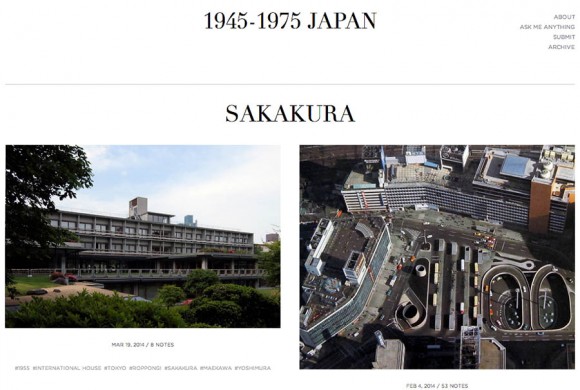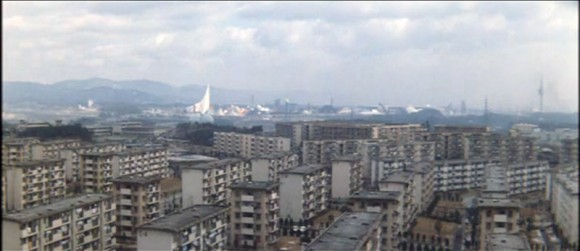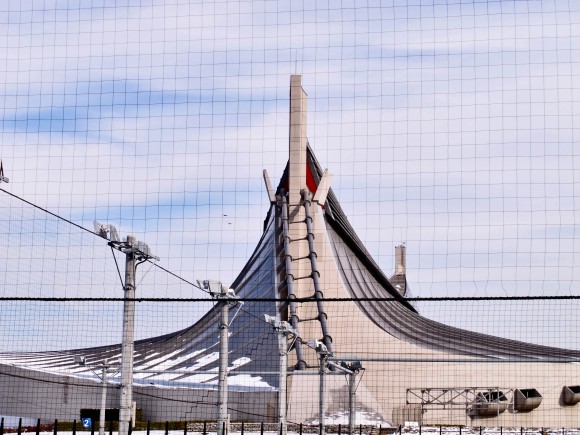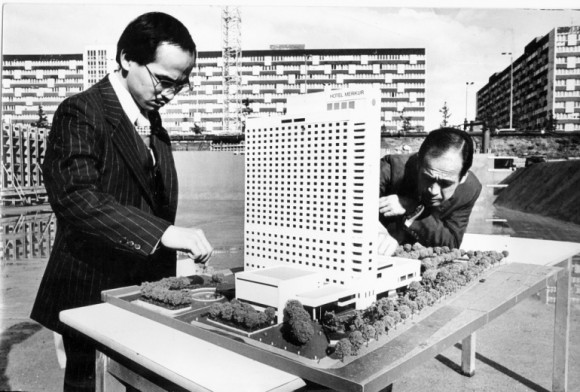Living in Harlem has offered the great chance to connect with black culture. This involved reading up on the district’s vibrant twentieth-century history as well as visiting the local Studio Museum on 125th Street a few times. Here, a recent exhibition on Afrofuturism was a highlight.
Category Archives: History
Tumblr update
My Tumblr on postwar Japan has managed to attract 1,100 followers since I started it half year ago or so. It’s become the place for me to put up close to 1,000 pictures of everything from architecture, documentary photography, advertisements to a growing collection of shinkansen paraphernalia that I find during my research. A project for the future is better categorisation; this would allow me to curate mini-exhibitions on certain architects, areas or urban experiences.
Spectacle nation-building: Expo ’70
In the second part of this short series on Japanese post-war nation-building and national identity, I will revisit the 1970 World Exhibition in Osaka, short “Expo ’70”. Just as with the Olympics six years before in Tokyo, the Expo gave a newly confident Japan a stage to present itself to the world and, more importantly, its own citizens.
View of the Expo grounds, with danchi housing estate in the front
1960s Tokyo photos
In 2013 Kyodo opened its archives for an exhibition showcasing Tokyo photos from the 1960s mainly. By juxtaposing them with shots from the same angle today, the incredible transformation of Tokyo over the decades becomes visible. I stumbled over its website where many of works can be seen. A small selection with links to posts from this blog after the jump.
Spectacle nation-building: 1964 Olympics
The 1964 Tokyo Olympics and the 1970 Osaka Expo were the two mass events that shaped the world’s view of post-war Japan. Within Japan, they also helped to foster a new sense of national identity. And for all the visual prowess these events commanded and progress they reflected, there was a darker side to them. I will begin by looking at the 1964 Olympics.
Yoyogi National Gymnasium (Kenzo Tange) – 1964
1964 Transformations
I am planning to pitch a piece on the 1964 Tokyo Olympics and the urban transformation the Games brought about. Besides some of Manuel’s photos, I want to use a slide I bought on ebay the other day (see below). We look up north across the newly-built expressway connecting Haneda airport with the city centre. The monorail track is to the right. More info here. Article abstract after the jump (comments more than welcome!).
Harris, Hamilton and Japan
Two Americans with a base in Harlem have made their lasting imprint on modern Japan. Townsend Harris, the US’s first consul to Japan, single-handedly created bilateral relations between both countries after he had founded today’s City College of New York. Alexander Hamilton, long after his untimely death, inspired Meiji-era reformers in how to design economic policy. His house up in Hamilton Heights today serves as a great museum commemorating the man’s myriad achievements.
Commemorative plaque for Townsend Harris at City College of New York
Tokyu Den-en-toshi Line
Japan is any rail buff’s heaven. The punctuality and efficiency of the trains is one thing, the sheer scale of the network another: 82 out of the world’s 100 busiest train stations are in Japan. The role private rail lines played in the post-war urbanisation of Tokyo is explored in the post below, using Tokyu’s Den-en-toshi Line as an example.
Den-en-toshi Line signage. Thanks to kawawa for taking the shot!
East Germany and Japan 2: economic cooperation
The 1980s are often described as the “lost decade” for much of the second and third world. East Germany was partly able to avoid economic malaise. That was partly the case because Japanese banks kept the tabs open while relations between the GDR and the East Asian miracle nation blossomed. Some further historical anecdotes after the jump.
Two icons of the 1980s GDR – Semperoper in Dresden and Mazda 323 parked to the far left next to more common vehicles Trabant, Lada, Skoda, and Wartburg; by Flickr user Felix O (creative commons)
East Germany and Japan 1: Kajima Corporation
Japan’s post-war rise is often mentioned in the same breath with Germany’s spectacular economic miracle – the “Wirtschaftswunder”. For someone born on the other side of the wall in East Berlin, it is interesting to read about the less-documented relationship between economic superstar Japan and socialist East Germany during the decades of the cold war. The first installment in a set of some anecdotes is about Kajima Corporation’s export of Japanese construction practices to Berlin, Leipzig and Dresden.
Hotel Merkur Leipzig model presentation by Kajima Corporation in 1978









